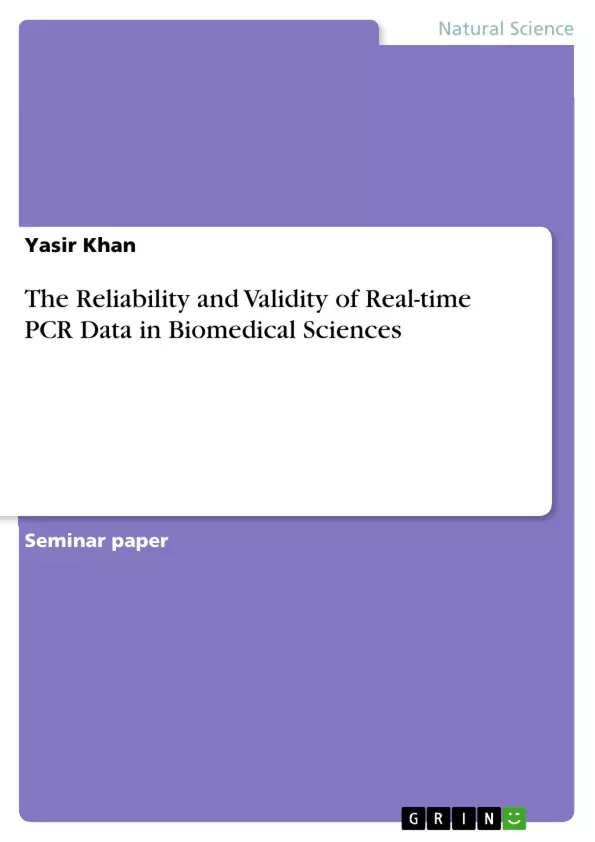Despite a fairly broad implementation and application of real-time PCR, there still exists a vacuum in determining the correct procedures for the examination of quantitative real-time PCR; more explicitly, there is a need to determine appropriate procedures to attain the right kind of statistical treatment. In today’s various methods of data analysis, the key statistical inferences are not as exclusive as required like confidence interval. This paper presents and tends to relate four statistical models and approaches on the basis of standard curve method and methods for data analysis.
The first approach developed a multiple regression analysis model for the determination of ∆∆Ct directly from the approximation of interface of gene and treatment paraphernalia. The second approach used the analysis of covariance i.e. ANCOVA model where the derivation of ∆∆Ct could be made through the sequential evaluation and analysis of effects of concurrent variables. The remainder of the models chiefly involves the calculation of ∆Ct subsequently connected through the non-parametric comparable Wilcoxon test and a two group T-test. Moreover, a data quality control model was established, which was then applied through the SAS programs determined for all of the aforementioned approaches; analyzed data output was also presented for a sample set.
The SAS programs were used to put forward practical statistical solutions for real-time PCR data while the programs were also utilized to analyze a sample dataset. After a comprehensive analysis conducted through the approaches and models mentioned above, similar results were obtained.
Inhaltsverzeichnis (Table of Contents)
- A- Introduction:
- i) Overview of the Project:
- ii) Guidance from research articles:
- iii) Purpose of the project:
- iv) Significance of study:
- B- Method:
Zielsetzung und Themenschwerpunkte (Objectives and Key Themes)
This paper aims to analyze and compare four statistical models for analyzing quantitative real-time PCR data, specifically focusing on the determination of appropriate procedures for data analysis and statistical treatment.
- Statistical models for real-time PCR data analysis
- Data quality control in real-time PCR
- The reliability and validity of real-time PCR data in biomedical sciences
- The significance of real-time PCR in biomedical research
- The role of the Polymerase Chain Reaction (PCR) in biomedical history
Zusammenfassung der Kapitel (Chapter Summaries)
The introduction provides a comprehensive overview of real-time PCR, its significance in biomedical sciences, and the need for reliable data analysis methods. It highlights the evolution of real-time PCR from a complex to a widely-used and affordable technique, emphasizing its crucial role in various fields like microbiology and gene expression analysis.
The "Method" section delves into the discrepancies between data quality standards of two mathematical models for relative quantification of real-time PCR data. It explores the AACt method and the efficiency-calibrated method, highlighting their contrasting assumptions. The section introduces a data correlation model for examining data quality, emphasizing the importance of a linear relationship between Ct and the logarithm of template concentration for all sample concentrations and genes involved.
Schlüsselwörter (Keywords)
Real-time PCR, quantitative PCR, data analysis, statistical models, data quality control, biomedical sciences, gene expression, Polymerase Chain Reaction, sensitivity, efficiency, accuracy, quality assurance, good laboratory practice, multiple regression model.
- Quote paper
- Yasir Khan (Author), 2014, The Reliability and Validity of Real-time PCR Data in Biomedical Sciences, Munich, GRIN Verlag, https://www.grin.com/document/288335



